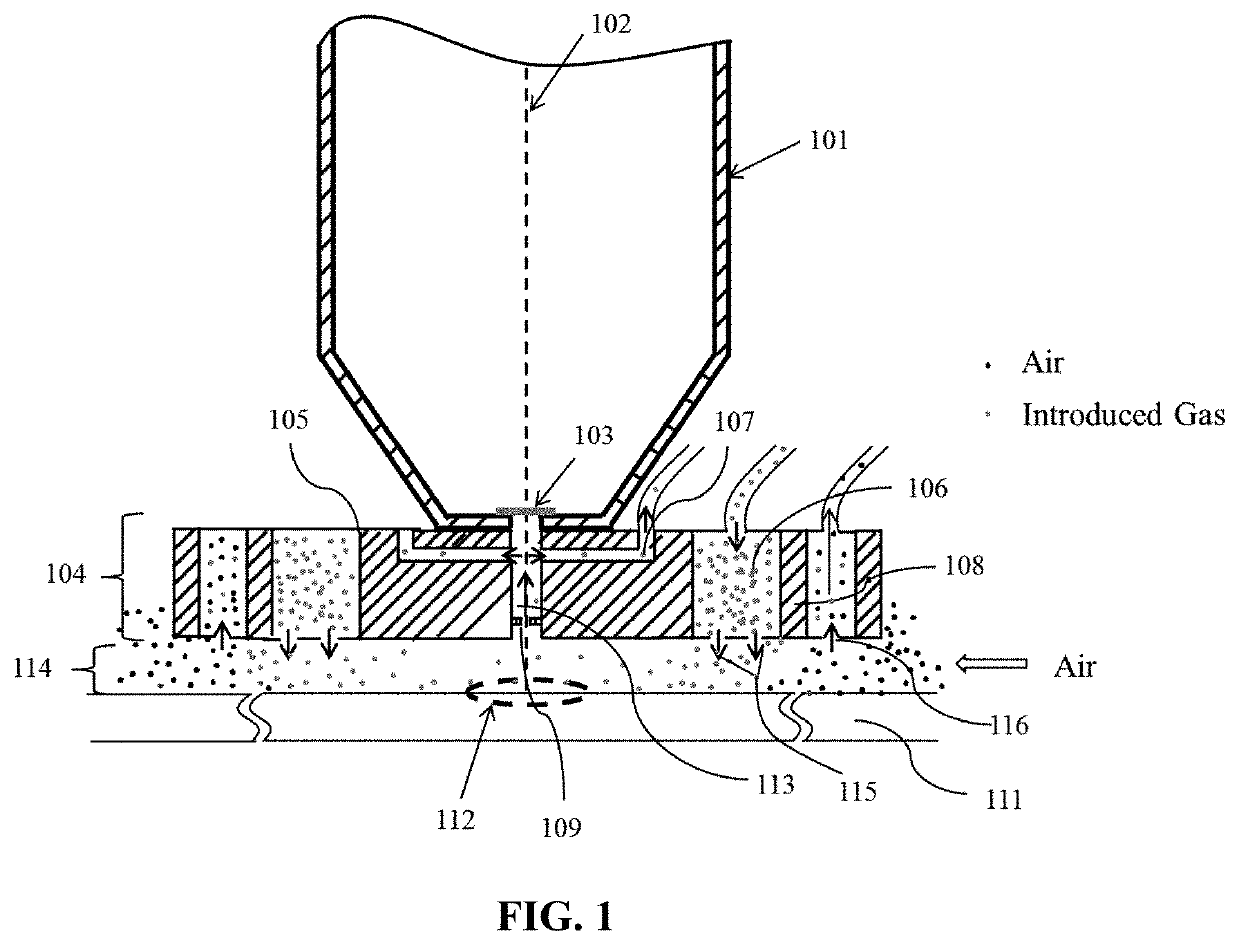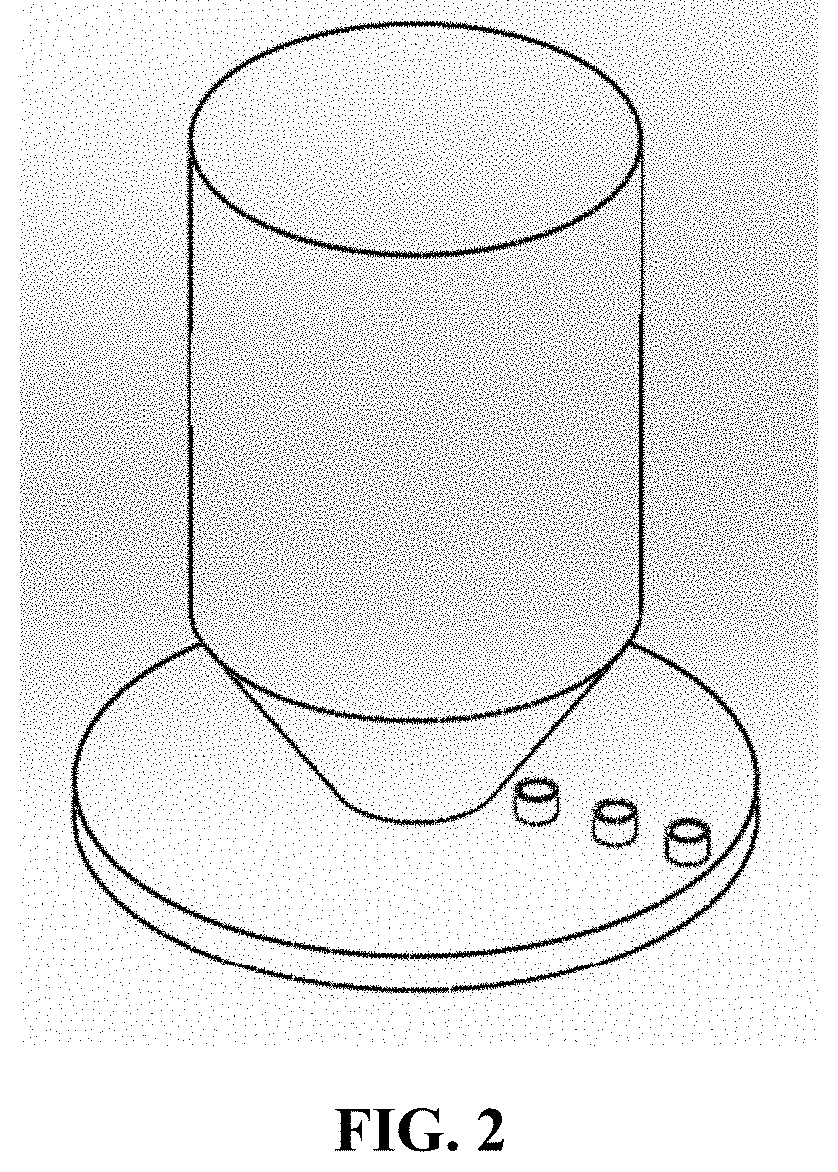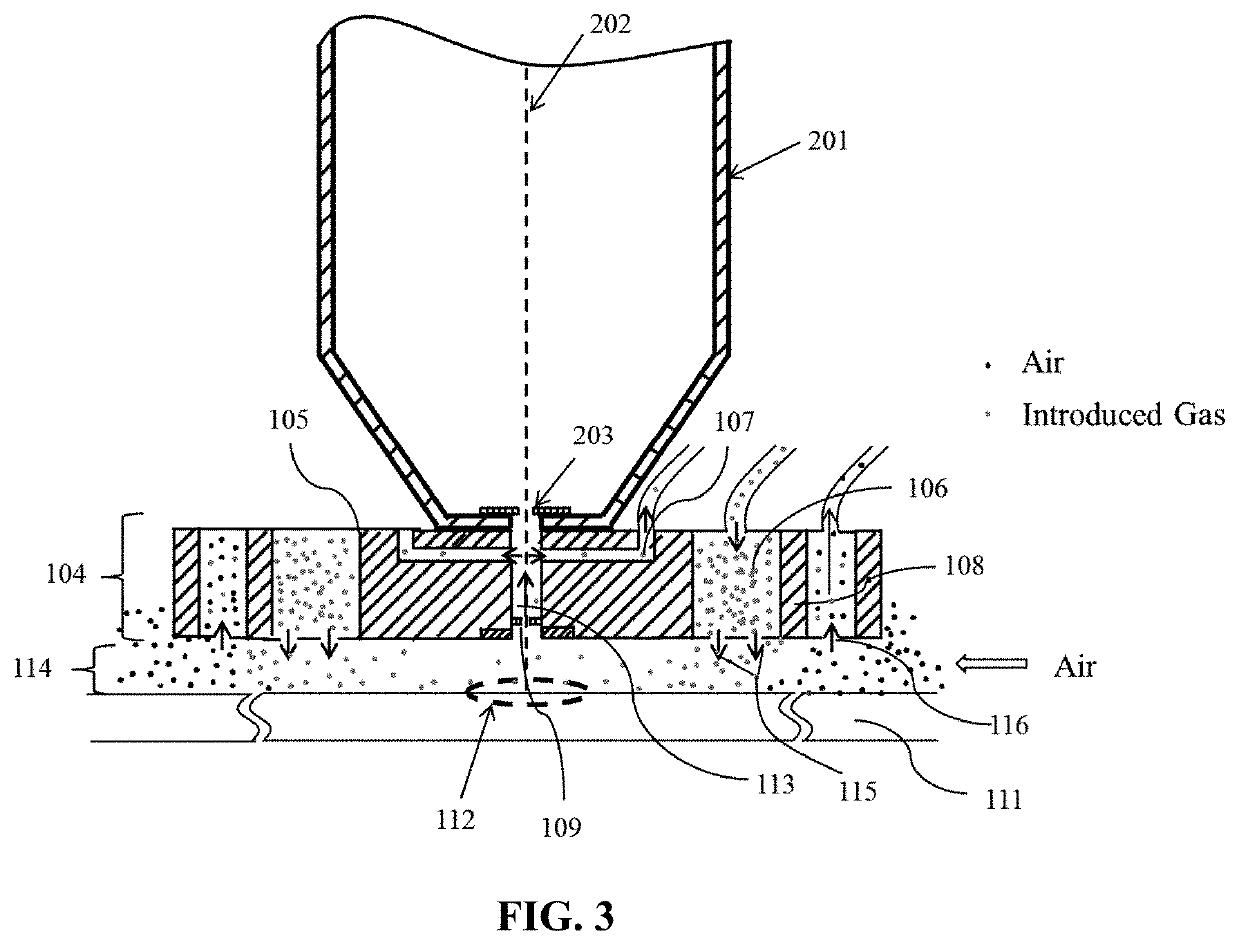Vacuum condition controlling apparatus, system and method for specimen observation
a condition control and vacuum technology, applied in the field of scanning electron microscopes, can solve the problems of difficult observation, many objects that are difficult to observe with conventional sem, and no longer applicable light diffraction,
- Summary
- Abstract
- Description
- Claims
- Application Information
AI Technical Summary
Benefits of technology
Problems solved by technology
Method used
Image
Examples
embodiment 1
[0044]FIG. 1 is a diagram of a sectional view of a structure of a vacuum condition controlling apparatus 104 according to Embodiment 1 of the disclosure. The top of the vacuum condition controlling apparatus 104 is connected to the bottom of an external electron beam generation instrument. The vacuum condition controlling apparatus is rotationally symmetric, about a central axis. The vacuum condition controlling apparatus may be a cylinder, a rotationally symmetric cuboid, a rotationally symmetric polyhedron, etc. The vacuum condition controlling apparatus has a central axis. The vacuum condition controlling apparatus includes a central channel 113, a first pumping channel 107 connected to an external first pumping system, a gas supplying chamber 106 connected to an external gas supplying system, and at least one second pumping chamber 108 connected to an external second pumping system, the central channel. The first pumping channel, the gas supplying chamber, and the at least one s...
embodiment 2
[0060]FIG. 5 is a diagram of an external structure of a vacuum condition controlling apparatus connected to an SEM, according to an embodiment of the disclosure. The top of the vacuum condition controlling apparatus 104 is connected to the bottom of the external SEM. The vacuum condition controlling apparatus is rotationally symmetric, about a central axis. The vacuum condition controlling apparatus may be a cylinder, an rotationally symmetric cuboid, an rotationally symmetric polyhedron, etc. The vacuum condition controlling apparatus has a central axis. The vacuum condition controlling apparatus includes a central channel 113, a first pumping channel 107 connected to an external first pumping system, a gas supplying chamber 106 connected to an external gas supplying system, and at least one second pumping chamber 108 connected to an external second pumping system, the central channel. The first pumping channel, the gas supplying chamber, and the at least one second pumping chamber...
embodiment 3
[0080]Based on the vacuum condition controlling apparatus according to Embodiment 1 and Embodiment 2, an improved vacuum condition controlling apparatus may be provided according to Embodiment 3 of the disclosure. FIG. 6 is a diagram of a sectional view of the vacuum condition controlling apparatus 104. The vacuum condition controlling apparatus in this embodiment may include more than one second pumping chamber 609, and one or more pumping chambers 608 may be added between the first pumping channel and the gas supplying chamber according to Embodiment 1 or Embodiment 2.
[0081]According to an embodiment of the disclosure, an external pumping system connected to a pumping channel may include one or more pumps operating independently to better control a vacuum condition.
[0082]Since the vacuum condition controlling apparatus according to Embodiment 3 is based on that according to Embodiment 1 and Embodiment 2, all features of the vacuum condition controlling apparatus according to Embod...
PUM
 Login to View More
Login to View More Abstract
Description
Claims
Application Information
 Login to View More
Login to View More - R&D
- Intellectual Property
- Life Sciences
- Materials
- Tech Scout
- Unparalleled Data Quality
- Higher Quality Content
- 60% Fewer Hallucinations
Browse by: Latest US Patents, China's latest patents, Technical Efficacy Thesaurus, Application Domain, Technology Topic, Popular Technical Reports.
© 2025 PatSnap. All rights reserved.Legal|Privacy policy|Modern Slavery Act Transparency Statement|Sitemap|About US| Contact US: help@patsnap.com



